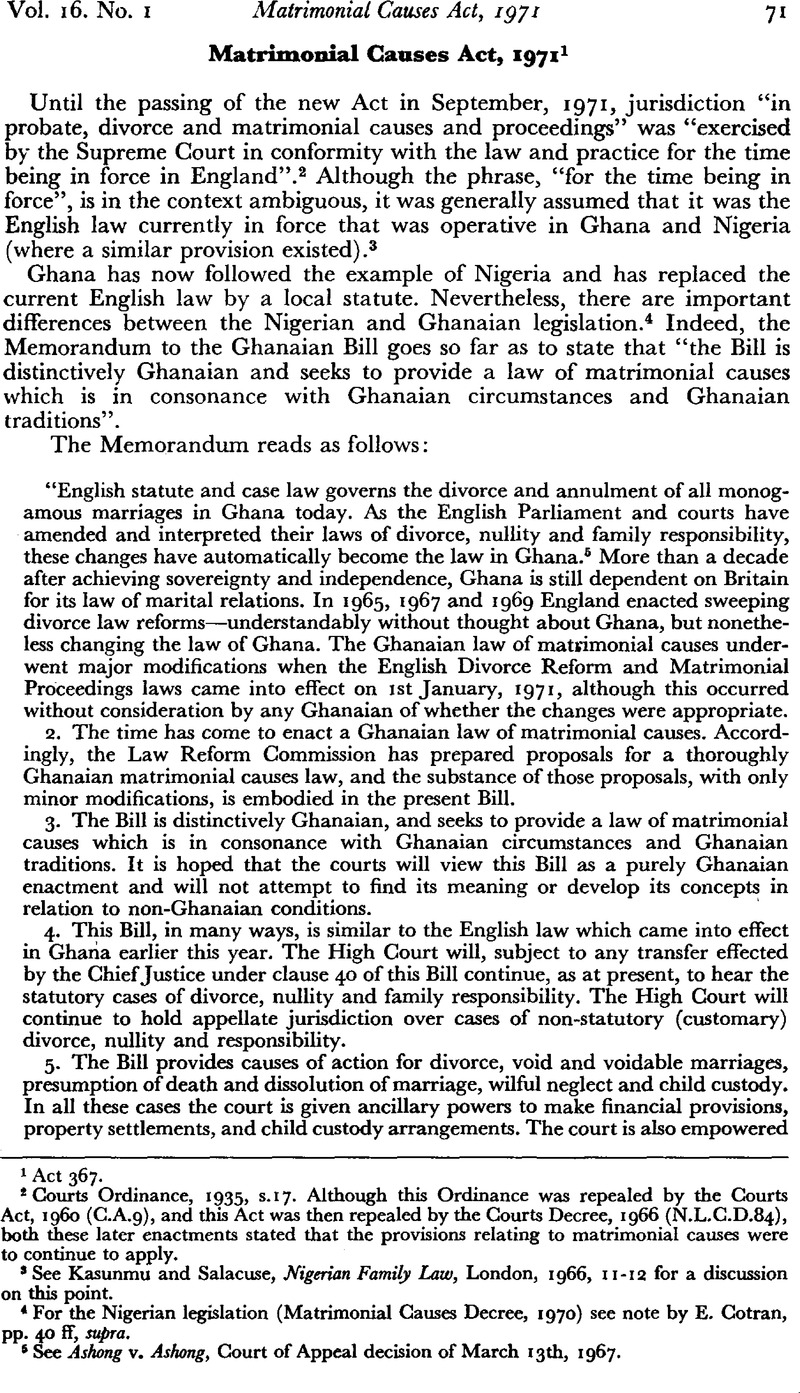No CrossRef data available.
Published online by Cambridge University Press: 28 July 2009

2 Courts Ordinance, 1935, s.17. Although this Ordinance was repealed by the Courts Act, 1960 (C.A.9), and this Act was then repealed by the Courts Decree, 1966 (N.L.C.D.84), both these later enactments stated that the provisions relating to matrimonial causes were to continue to apply.
3 See , Kasunmu and , Salacuse, Nigerian Family Law, London, 1966, 11–12 for a discussion on this point.Google Scholar
4 For the Nigerian legislation (Matrimonial Causes Decree, 1970) see note by E. Cotran, pp. 40 ff, supra.
5 See Ashong v. Ashong, Court of Appeal decision of March 13th, 1967.
page 72 note 1 Clauses 39, 18–31, 32, 34, 35, 36 and 37 referred to in the Memorandum appear in the Act, respectively, as ss.38, 18–29, 31, 33, 34, 35 and 36.
page 79 note 1 The phrase in the English and Nigerian legislation is: “has broken down irretrievably”.
page 79 note 2 Divorce Reform Act, 1969, c.55.
page 79 note 3 As in Nigeria; in England the period is three years.
page 79 note 4 Contrast the position in Nigeria where these bars are preserved.
page 79 note 5 Contrast the position in Nigeria.
page 79 note 6 Based on s.3(1)(2) of the English Act.
page 80 note 1 Section 41.
page 80 note 2 The Marriage Acts of Nigeria and Ghana stem from a parent Marriage Ordinance of 1884 and have been largely unaltered since that date.